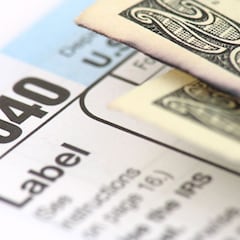What does a tax transcript show? Is it the same as a tax return?
When you need to provide information on your financial situation like when applying for financial aid or a loan, you can ask the IRS for a tax transcript.

There are many situations in which you may need to provide proof of your income, assets and tax liability. Take for example when applying for college financial aid, a mortgage or purchasing a life insurance policy. There are two main ways available to do so through the Internal Revenue Service.
Both tax returns and tax transcripts can be used to show your personal financial information, but they offer different amounts of detail. The tax transcript is easier to attain from the IRS but it shows only limited information, with different types showing different details. A copy of your tax return is harder to get hold of but it shows a more complete picture of your financial situation.
What are the different types of tax transcript?
The IRS offer five types of tax transcript which can be requested without cost to the filer, unlike requesting a copy of your tax return which comes with a fee. The five types of tax transcript are as follows:
Tax return transcript
This shows most line items including your Adjusted Gross Income, along with any forms and schedules submitted in your filing. This usually meets the application requirements of mortgage and student loan institutions, but they are only available for returns processed in the previous three years.
Tax account transcript
This provides most basic data like your return type, marital status, adjusted gross income, taxable income and all payment types. It can be requested for any of the previous ten years.
READ ALSO: Can you report crypto losses on your taxes?
#IRS Free File is available now on https://t.co/kcgZUfN9B4 for taxpayers to prepare and file their 2023 #IRS tax returns. If you’re looking for money-saving filing options, check out: https://t.co/AX4GI0Cixz pic.twitter.com/aZOw0NwLJz
— IRSnews (@IRSnews) March 3, 2024
Record of account transcript
The most comprehensive transcript on offer, combining the previous two transcripts into a complete document. Like the tax return transcript, it is only available for the previous three years.
Wage and income transcript
This shows data provided to the IRS in Forms W-2, 1099, 1098 and Form 5498, IRA Contribution Information, but may not be available until July in the year after filing. Filers can access the previous ten years’ worth of information.
Verification of non-filing letter
If you need proof that you have not filed taxes for a given year, this will indicate that the IRS has no record of a filing, although it does not say whether or not you were required to file that year. From June 15 onwards you can request one of these for any of the previous three years.
READ ALSO: Deductions that can reduce your tax bill
How to request a tax transcript from the IRS
Related stories
The best way to get hold of a tax transcript is to use the IRS’ dedicated Get Transcript Online portal. After providing some personal information and your account number from a credit card, mortgage or similar, you will be able to view, print and download any transcript required.
If you want to be sent a physical copy of the transcript, you can also request a tax return transcript and/or a tax account transcript through the mail using Get Transcript by Mail or by calling 800-908-9946.
If you choose these non-electronic methods, it is helpful to bear in mind that this will typically mean it will take five-to-ten calendar days for your physical transcript to arrive.


Complete your personal details to comment